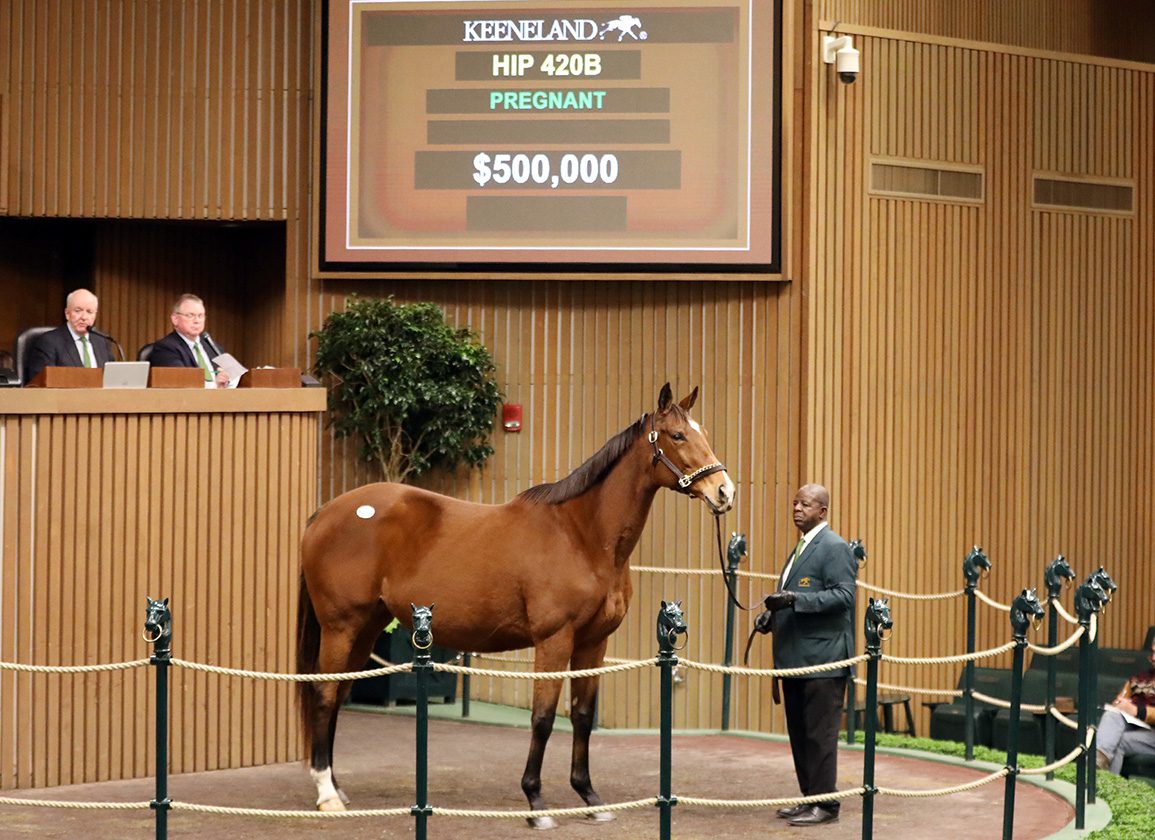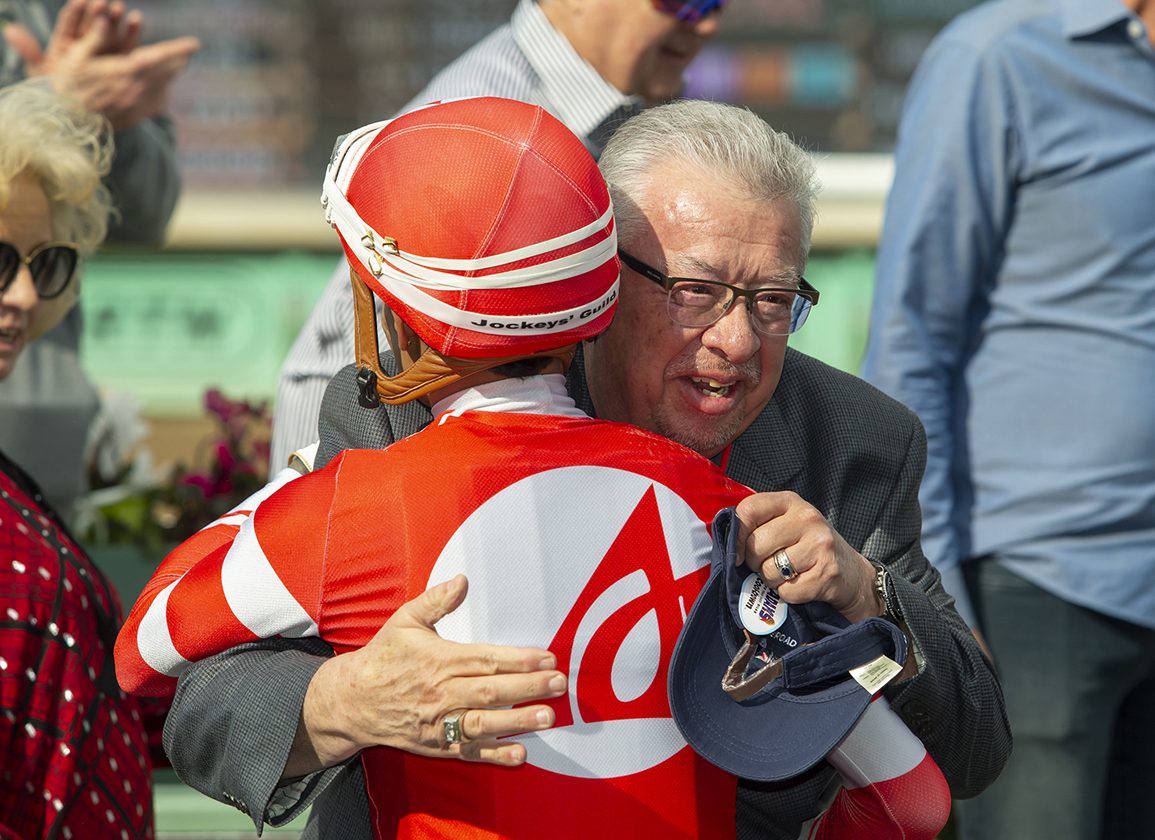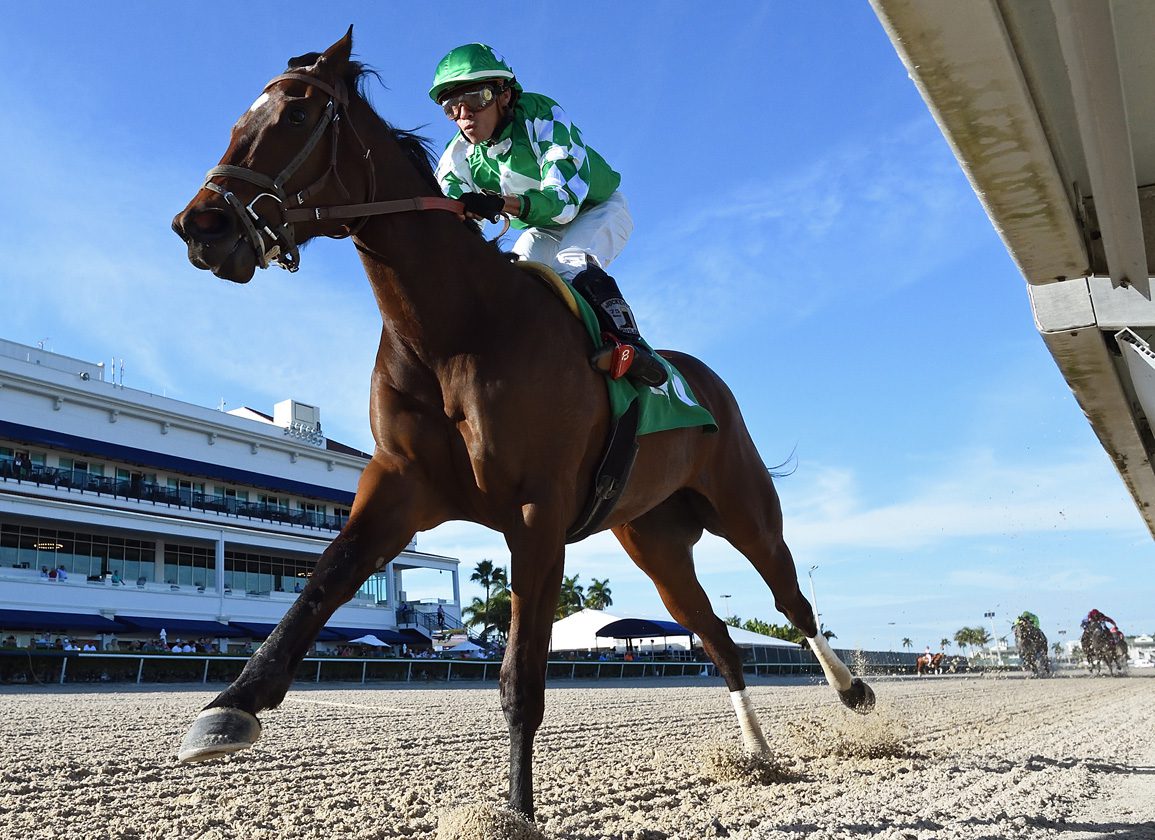The case of Jeffrey Englehart, who bought a horse at an OBS 2-Year-Old sale in June who had given Clenbuterol sometime before being purchased by Englehart, has renewed questions about the role of the Horse Racing Integrity and Safety Authority (HISA) and whether or not it would be in the sport's best interest for it to expand its jurisdiction to cover sales as well as racing. Currently, HISA has no authority over a horse until it has its first recorded public workout, which is when it becomes a “covered” horse. HISA CEO Lisa Lazarus doesn't see that changing any time soon.
“There is a little bit of a misunderstanding about what HISA's authority is in this regard,” she said. “We can only do what the statute allows us to do and right now the statute specifically provides that a horse becomes a covered horse upon its first workout. We would have to ask for a legislative change if we wanted to change the scope of that jurisdiction, which would be a heavy lift and not something we'd probably go to Congress and try to do right now.”
Lazarus stresses that the sales companies should use every resource available to them to make sure that sellers are not using drugs that might enhance the value of a horse being sold.
Lazarus said she has had discussions with the heads of the sport's three largest sales companies–Keeneland, OBS and Fasig-Tipton–and asked that they work together to come up with unified rules that mirror those already in place by HISA for covered horses.
“HISA did convene a meeting with all the sales companies in October,” she said. “We all got together in a room and discussed the fact that it made sense to get on the same page. We would hope that there would be was a logical protective flow from weanling to retirement that makes sense. It doesn't have to be the same program for every stage of a horse's life, but it needs to be sensible and consistent and all fit together. There was wide agreement with all the sales companies that this was an important initiative and they said they would work towards it. They've been working really hard on coming up with an aligned agreement.”
Lazarus said that if there is still a reason to suspect that some horses are slipping through the cracks at the sales, HISA might take another look at getting legislation that would allow it to categorize a horse as covered at some time prior to its first official workout.
“I trust that the sales companies are going to be able to do this on their own and that we won't need to take a stricter view,” she said. “If for some reason that doesn't happen, we would definitely, over time, look at that and consider our options. Once a horse comes into the HISA program and is our responsibility we do everything we possibly can to protect it. But not having a window into what has happened with the horse before they become a covered horse can be challenging. That's why we are working towards this aligned system where everything is really clear and the sales companies are all doing the same thing. If that is a fit with HISA's program, that would be really beneficial for the industry.
“The way to move the sport forward is to have more consistent and stricter regulations throughout a horse's life. Based on my experience since HISA's inception, that is most effectively done when the stakeholders come to the table and are willing participants. You come up with a much stronger program when you have everyone buy in. I am working every day to earn the trust of horsemen and earn the trust of the racetracks. If I could get sales companies on board and make changes that make a lot of sense, that would mean we would have a much better chance of being successful right out of the gate. I really believe that's where we need to end up. But I also believe that given where we are and given the commitments I have received from the sales companies, we'll be able to do that without having to legislate or change HISA's jurisdiction.”
Englehart was notified that a horse under his care had been found to have Clenbuterol in its system when it was tested by the Horseracing Integrity and Welfare Unit (HIWU) after it broke down in a workout at Finger Lakes in November. The positive was the result of a hair test and the infraction was made public on the HIWU website. Englehart faced a suspension of up to two years.
Englehart insisted he never gave the horse the drug and that it had to be given to the horse before he bought it at Ocala. The original HIWU test was a standard hair test. Tests known as segmented hair test can pinpoint when a drug was given to a horse and Englehart pushed for the horse to undergo that type of test. HIWU had the Kenneth L. Maddy Equine Analytical Chemistry Laboratory at the University of California, Davis perform the segmented test and it revealed that the Clenbuterol was in fact administered before Englehart became the trainer. All charges against Englehart were then dropped.
Lazarus admitted that the Englehart matter could have been handled better.
“There was an initial matter that we had to flag because something was found in the horse,” she said. “But we should not be holding the trainer responsible if that substance went into the horse before he or she was responsible for it. One thing we are going to change, we are not going to make a positive test from hair public until a B sample comes back.
“The only way we failed Mr. Englehart in this case was the public announcement of his violation. He didn't have any suspension and there were no repercussions from a sanctions standpoint. There was nothing in place until the system concluded, but the public did know about it. It would be different if Clenbuterol were found in the blood or urine. We know how long Clenbuterol can stay in blood and urine. So if there is a Clenbuterol finding in blood or urine there would be no ambiguity unless the trainer got the horse the day before or within a week. With hair testing we can find things going back six months and even a year sometimes.”
“What I really hope is that this situation shows the public and the racing industry that HISA is always going to do what's right. We are going to follow the science and we are going to follow the facts. We are giving Mr. Englehart the money back that he spent for the B sample. He is going to be made entirely whole. As I said, the one thing I would do differently is not to have made this public from the outset. This is the first case we've had of this nature and I've always said there will be things that we learn along the way that we didn't foresee and that we have to adjust.”
The post HISA Not Positioned to Police Sales appeared first on TDN | Thoroughbred Daily News | Horse Racing News, Results and Video | Thoroughbred Breeding and Auctions.



